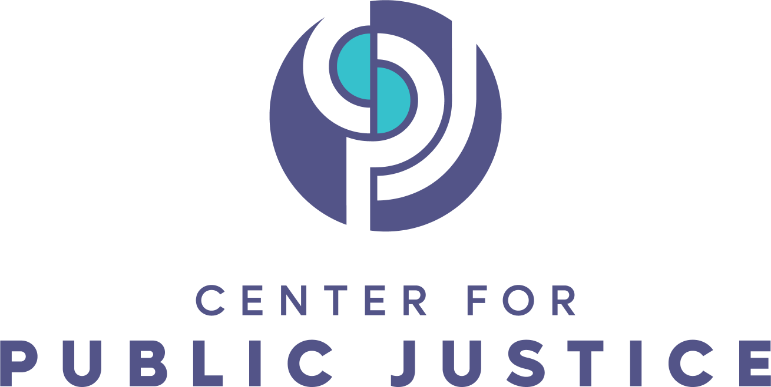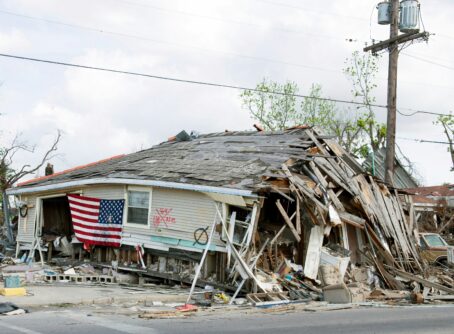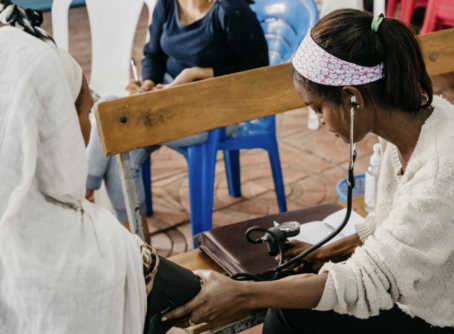
As a child, Danny suffered through abuse and trauma. His family faced poverty that was severe enough to enter them into Virginia’s welfare system. In the instability and danger of his childhood, he struggled to feel safe, and he didn’t think he belonged anywhere. Today, Danny doesn’t like to talk much about his past, but the traumas of his childhood lurk in the shadows of his adult life. He is currently serving time at an adult facility, but he and his family have become strong advocates for those in similar situations. They know intimately how valuable these children’s lives are – and how dangerous the world can be for them.
FosterVA highlights the unique stressors that children face in foster care, which may influence their behavior. These include, but are not limited to, a feeling a loss of safety, lack of control, being in survival mode, and/or a lack of trust. Their stories often go unnoticed, and it takes people such as Danny’s grandmother Sonnja Brown, to advocate on behalf of these children.
Crossover Youth
Before we say more about Danny and children like him, a few terms need to be defined. First, mistreated children who suffer abuse can “pass on” the violence through delinquent acts. They are often called crossover youth. Children who navigate both the child welfare system and the juvenile justice system are referred to as Dual-system youth. Across the nation, the prevalence of dual-system involvement among youth that are referred to juvenile court is upwards of 50%. That is to say, half of the young people entering the court system have past or current engagement with child welfare.
These youth typically experience adverse childhood experiences (ACEs), or traumatic events that occur in childhood, that give them a predisposed risk for delinquency. Examples of ACEs are abuse, neglect, household or placement disruptions, and general instability. Understanding what these young people have been through helps us see their behavior in context—not just as a problem—but as a response to pain.
Many crossover youth suffer from system-induced criminalization, where institutional policies and practices contribute to the criminalization of youth. Schools, law enforcement, or social services can play a role in labeling young people as criminals. Children in the welfare system often have intense trauma responses, resulting in behaviors that seem adverse to a safe situation, such as deciding to run away from home. These behaviors can be treated as crimes, resulting in these youth not receiving the necessary care that they need. It creates a direct pipeline for children in the welfare system to go into the juvenile justice system. The same factors that can lead to a child being taken out of their home, like poverty, abuse, or family issues, are often the same factors putting them at risk of involvement with the justice system.
Collaboration Between Child Welfare and the Juvenile Justice System
Since there’s a strong link between being in the child welfare system and ending up in the juvenile justice system, these two systems must learn how to better work together. However, systemic complexities can make collaboration challenging.
Fundamentally, the child welfare and juvenile justice systems have conflicting goals, and operate independent of each other. The child welfare system focuses on protection, rehabilitation and securing a safe environment for children who have to be removed from their home. The juvenile justice system focuses on public safety, accountability, and punishment for children who commit a crime. These competing goals can create tension in determining the most effective way to address dual system youth.
Practically, there is an overall lack of coordination and communication between the two systems. Information sharing is often limited due to privacy laws, differing protocols, and a lack of coordinated communication. This disconnect can result in conflicting case plans and significant delays in getting dual-system youth the treatment they need. Oftentimes, judges are not aware of a youth’s child welfare background, like in the case of Danny above, though this background can provide essential context and provide a more holistic perspective to their case. Danny’s grandmother, Sonnja Brown, remembered that when Danny went into the juvenile justice system, the judge had no idea that he was cross system involved. She argues that this information could have had a large impact on Danny’s life.
The 2002 reauthorization of the Juvenile Justice and Delinquency Prevention Act (JJDPA) mandates that all jurisdictions ensure collaboration between juvenile courts and child welfare systems, allowing courts access to records of justice-involved youth. Despite this law, some jurisdictions have not fostered this collaboration well, and have continued to put more vulnerable kids behind bars when it may not be the needed solution. For example, in Washington DC, a report by the non-profit Council for Court Excellence revealed that insufficient coordination between the child welfare and juvenile justice systems has resulted in a failure to track crossover youth, thereby limiting their access to essential services.
Public Justice
As Christians, we are called to seek justice, love mercy, and walk humbly with our God (Micah 6:8). This calling extends beyond personal morality and into the systems and structures that shape our society, especially when those systems fail the most vulnerable among us. Unfortunately, dual-system youth often fall through the cracks and therefore suffer from the brokenness in both systems. This problem calls for a holistic response that utilizes both government and civil society in a collaborative effort.
The Center for Public Justice outlines the guidelines and responsibilities of government. The government bears the responsibility to uphold public justice by creating and enforcing laws that protect the safety, welfare, and order of its citizens. True governmental authority is bound by law, accountable to its people, and ultimately answerable to God. Public justice recognizes that the government is authorized by God to bear the responsibility to promote human flourishing. When systemic failures funnel youth from the child welfare system into the juvenile justice system, it reflects a shortcoming of the government in protecting welfare and upholding equitable justice.
In conjunction with the government, civil society bears a responsibility in this issue as well. Families, communities, churches, after-school programs, and more, have a responsibility in showing up for these vulnerable kids. Crossover youth are members of the community and therefore civil society has a more direct reach to impact these children’s lives. Richard N. White, magistrate of the Mahoning County (OH) juvenile court explained that those entering the juvenile courts with strong family support systems have a much greater chance for a positive outcome. Magistrate White went on to say, “When I’m on the bench and I have a child who is in front of me for the first time- let’s say property crime- and you have family support that you see in front of you, the chances of success are overwhelming.” But children within the welfare system often lack consistent support.
What if Danny had a community of people who were willing to show up to court and advocate for his character? What if the judge that convicted Danny at age fourteen saw that there were pastors or teachers that pledged to look out for him? Even by showing up to court to advocate for dual-system youth sends a message that these children are not forgotten members of the society but are people that have a community behind them that will foster accountability but care. Therefore, civil society must advocate for those without a reliable support network.
Public Justice Applied: The Crossover Youth Practice Model
The Crossover Youth Practice Model provides a beautiful picture of public justice, with government and civil society partnering together for kids like Danny. Sonnja Brown and Danny joined the Crossover Youth Practice Model work team for the City of Alexandria. Sonnja stated, “Having had the opportunity to engage with the professionals from CJJR and our community leaders here in Alexandria, VA, has helped me begin a new journey giving my family hope for better outcomes for all youth.” The Crossover Youth Practice Model also extends beyond Alexandria.
In 2010, Georgetown University’s Center for Youth Justice developed the Crossover Youth Practice Model (CYPM). This model was created to provide a structure for addressing the needs of crossover youth who are at risk of fluctuating between the child welfare and juvenile justice system. CYPM provides services, training and technical assistance to families, service providers, government agencies, and other stakeholders in multiple jurisdictions. Their four-fold goals include reducing the number of young people who become dually-involved, decreasing how many are placed in out-of-home care, cutting back on the use of group care settings and addressing the overrepresentation of dually-involved youth of color. Participating jurisdictions have seen positive outcomes such as reductions in youth recidivism, depletion in the use of pre-adjudication detention, and increases in home placement/reunification.
Implementation occurs in three phases. Phase 1 (Arrest, Identification, and Detention) promotes identifying crossover youth at the earliest point of contact with the juvenile justice system and establishing cross-system collaboration. Phase 2 (Joint Assessment Process and Coordinated Case Planning) promotes cross-system collaboration across court and case planning so it is done in a collective manner. Phase 3 (Coordinated Case Management and Ongoing Assessment) promotes strengthening the use of a cross-system approach in working with families, improving health outcomes, and ultimately leading to case closure. Governments can use this model and implement policy that ensures these three phases are employed across jurisdictions.
The Crossover Youth Practice Model (CYPM) has proven particularly effective in Marion County, Florida. In response to an increasing number of youth entering foster care with more severe behavioral challenges, the Florida foster care agency recognized the need for a more coordinated approach to prevent these youth from entering the juvenile justice system. By implementing CYPM, Florida established dedicated crossover representatives in each region of the state. These representatives facilitate collaboration between the child welfare and juvenile justice systems. Since 2010, CYPM has been implemented in 23 states, but expanding this approach across the country could further strengthen outcomes for crossover youth. Civil society can advocate for this model to be implemented in their respective jurisdiction and change outcomes for people in their communities. This can be done by encouraging organizations to apply to implement CYPM into their jurisdictions and address the needs they see in their community.
The Bible and Crossover Youth
As Christians we are called to protect the vulnerable and uplift justice. Serving crossover youth provides Christians a critical opportunity to follow Jesus’ commands and example. Mark 10:14 describes Jesus’ own interaction with a vulnerable population: children. “But when Jesus saw [the disciples shooing children away], he was much displeased, and said unto them, suffer the little children to come unto me, and forbid them not: for of such is the kingdom of God.”
Jesus commands the disciples not to obstruct the growth and flourishing of the young children who wanted to see Him. As the disciples of today, we would do well to heed Jesus’ voice and better support at-risk youth before, during, and after cross system involvement. Unfortunately, Danny’s story is not unique and many children across the country become cross-system involved. However, we can reach out with public justice to make a difference and ensure that we seek out the brokenness and establish justice as we walk humbly with our God.
Acacia Tripplett was the Summer 2025 Families Valued Intern at the Center for Public Justice. She is currently studying Political Science and Psychology at George Washington University.





